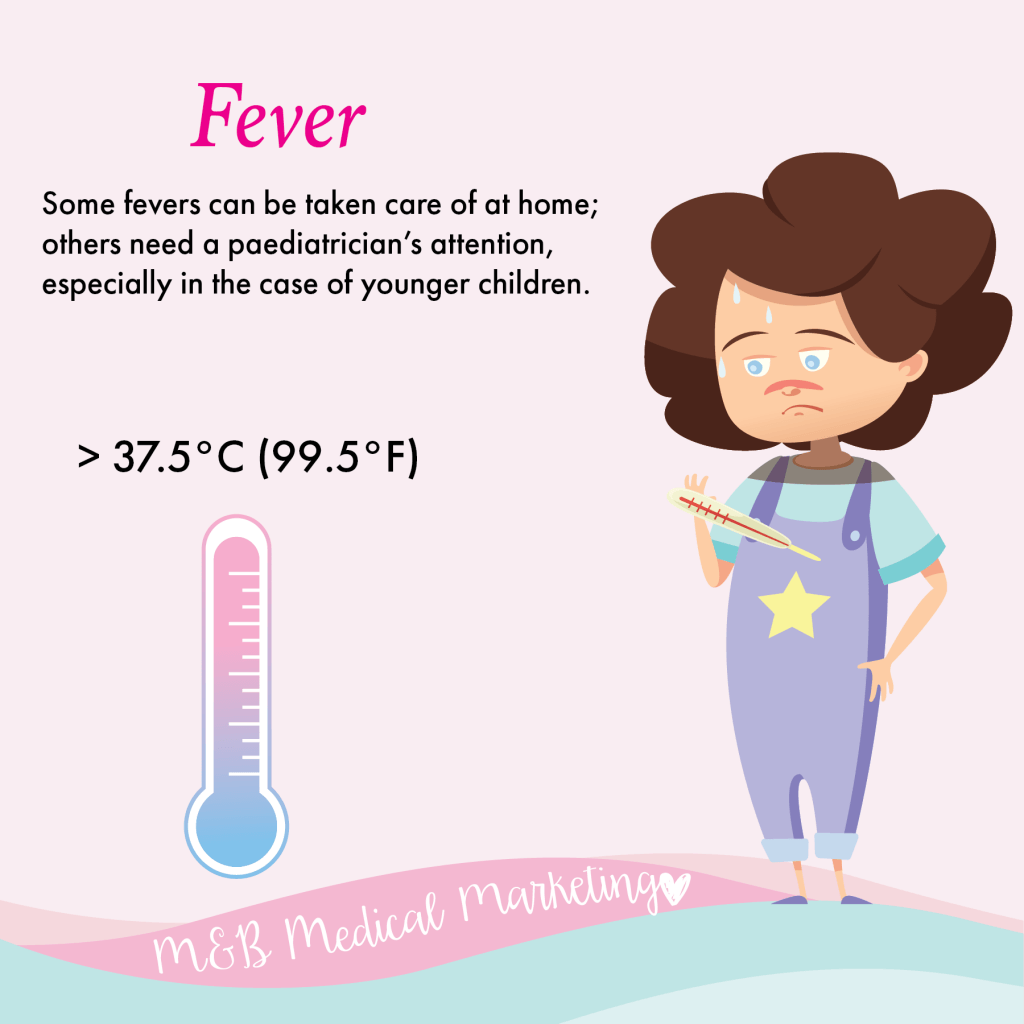CURIOUS TODDLERS
FEVER

When your child is fever, it usually means the body is fighting an infection. Some fevers can be taken care at home; others need a paediatrician’s attention, especially in the case of younger children.
What it is
Fevers help fight infection by creating
an unfriendly environment for bacteria and viruses. Chemicals released into the bloodstream during an infection signal the brain to turn up the heat, which increases the number of white blood cells that fight the ‘invaders’.
The body tries to conserve heat through a few mechanisms. Constriction of blood vessels leads to chills and muscle contraction, and is experienced as shivering and ‘goose bumps’. When the fever ‘breaks’, the evaporation of sweat reduces the body temperature.
What to look for
First, find out if your child really has a fever. Then decide if the fever is dangerously high and/or if your child is dehydrated. In both cases, be sure to see your doctor right away.
Is it a fever?
A fever is a temperature of more than 37.5°C (99.5°F). The younger the child, the more important it is to see your doctor.
Enough fluids?
If your child shows signs of dehydration – increased thirst, dark or infrequent urine, dull eyes, dry skin or dry lips – refer to a doctor as soon as possible.
Uncomfortable?
If your child is cranky, cries a lot, looks listless or has a stiff neck, refer to a doctor immediately.
What can be done
Monitor fever
Using a clinical thermometer, take your child’s temperature every six hours or so
to see if it is changing. Avoid hot or cold drinks before taking an oral temperature to ensure an accurate reading. Monitor more frequently if you suspect the temperature is rising rapidly.
Replace fluids
Your child should drink at least the usual amount, preferably more. Good choices are water, diluted juices and soups, ice confections and gelatine desserts.
Reduce fever for comfort
If your child seems very uncomfortable, paracetamol may help reduce the fever. Do not give aspirin. Sponge baths with lukewarm water will also help.
If the child has a history of febrile fits (fits caused by rapid rise of temperature), or a family history of fits, monitor the rise of temperature even more carefully. All fits must be investigated and seen by a doctor.
Source: MIMS HealthToday Malaysia
